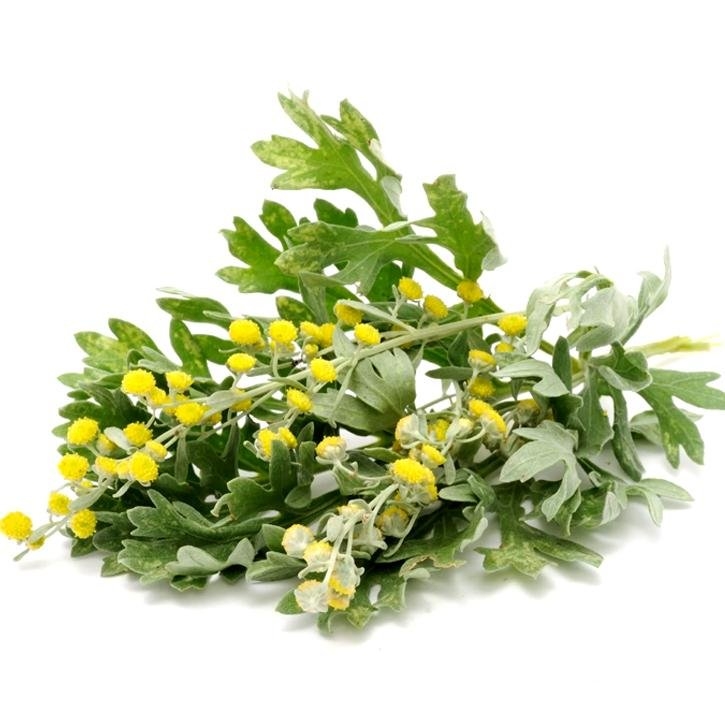Silverly green, herbaceous plant up to 60-
It is native to central and Southern regions of Europe, Northern Africa, and Asia. It grows spontaneously in arid and dry fields and it is adapted to warm and mid-warm weather. The plant also grows in deciduous and semi-deciduous and semi-evergreen forest, xerophilous underbrush, mesophilous oak and mixed forest. This plant lives all year long, although during winter it loses its stem and leaves to blossom again in spring; this way one same plant might repeat the cycle for about 10 years. It blossoms in summer (July to September) and it is harvested at the beginning of the blossom stage.
Wormwood is part of many liqueur (absinthe) and aperitive (vermouth). The absinthe liqueur is forbidden in many countries as it is highly toxic when it is consumed in high amounts.
The leaves and the flowering tops.
Internal use:
External use:
Plantas Medicinales. Margarita Fernandez y Ana Nieto. Ed Universidad de Navarra. EUNSA 1982.
Matière Médicale. RR Paris- H. Moyse. Masson 1981.
Guía de Campo de las Flores de Europa. Oleg Polunin. Ediciones Omega S.A. Barcelona, 1977.
Guía de las Plantas Medicinales. Paul Schauenberg y Ferdinand Paris. Ediciones Omega S.A.
El gran libro de las Plantas Medicinales. Editorial Everest. S.A.
Plantes Médicinales des Régions Tempérées. L. Bézanger-Beauquene, Pinkas, Torck, Trotin.
Plantas Medicinales. Thérapeutique-Toxicité. Christiane Vigneau. Masson, Paris 1985.
Fitoterapia: Vademecum de Prescripción. Plantas Medicinales. Colaboran: Asociación española de médicos naturistas. Colegio Oficial de Farmacéuticos de Vizcaya.
Pharmacognosy, Phytochemistry, Medicinal Plants. Jean Bruneton. Lavoisier Publishing.
Plantas Medicinales. El Dioscórides Renovado. Pio Font Quer.
Pharmacopée Française IX Édition.
Farmacognosia 2ª Edición. Jean Bruneton. Ediciones Acribia S.A. 2001.
Bulletin officiel Nº 90/22 bis. Ministère des Affaires Sociales et de
French Public Health Code.
Bross B. Plantas y sus aceites esenciales. Ed. Omega, 1994.
Martindale. The extra Pharmacopoeia 29th Edition. The Pharmaceutical Press 1989
The Complete German Commission E Monographs. Therapeutic Guide To Herbal Medicines. Mark Blumenthal. American Botanical Council 1998.
Pharmacognosy, Phytochemistry, Medicinal Plants. Jean Bruneton. Lavoisier Publishing.
Database Management Unit of the National Germplasm Resources Laboratory, Plant Sciences Institute (PSI), Beltsville Agricultural Research Center, Agricultural Research Service, U.S. Department of Agriculture.
